Sixteen years ago in Toronto, contemporary artist Jennifer Stillwell methodically disassembled furniture in a staged living room at YYZ Artists’ Outlet, wrapped it all up into a massive roll of carpet, and titled the ball of debris Bale. This memorable performance installation was curator Ben Portis’s inspiration for Baleful: an object-centric show currently on view at Pari Nadimi Gallery. Featuring works by five contemporary Canadian artists — Stillwell included — the exhibition shines a spotlight on the life, death, and reincarnation of inanimate objects, materials, and stuff of various kinds.
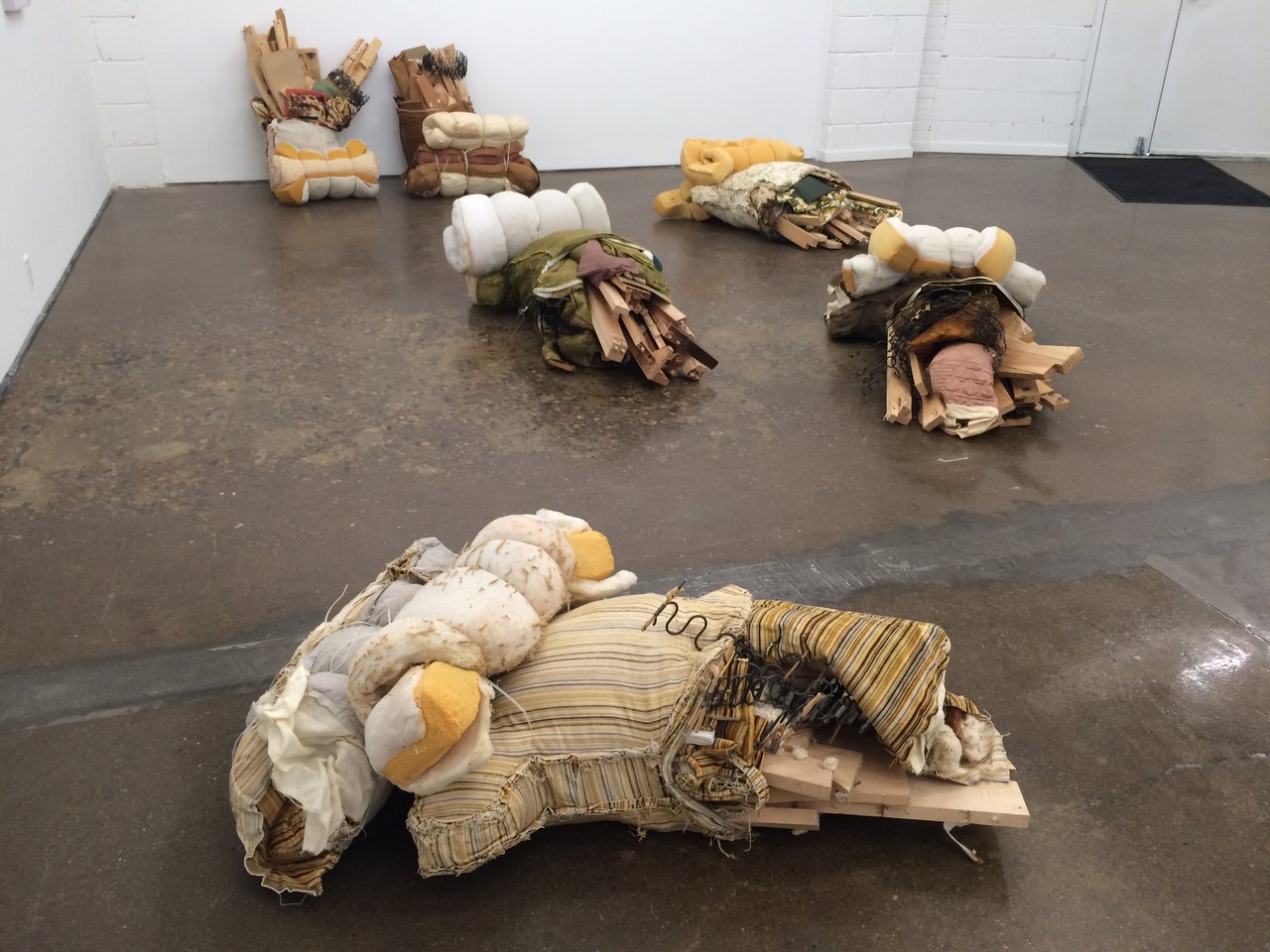 Jennifer Stillwell, Packs, 2002, reconfigured armchairs (detail of two from a series of seven), dimensions variable, Collection of Oakville Galleries
Jennifer Stillwell, Packs, 2002, reconfigured armchairs (detail of two from a series of seven), dimensions variable, Collection of Oakville Galleries
The star of the show is a seven-piece installation by Stillwell called “Packs.” This work not only looks like the reborn spawn of her art circa 2000, but also sets the mood for the exhibition; one of eerie undertones, due to the solemn and abandoned nature of the sculptural debris. Each pack is compiled of materials like un-stuffed cushions, box springs, dismantled wood panels, etc., then tied tightly together into backpack-shaped sculptures. In Bale-like fashion, Stillwell once again gives old objects a new life through the process of dismantling and re-purposing; i.e., the reincarnation for inanimate objects.
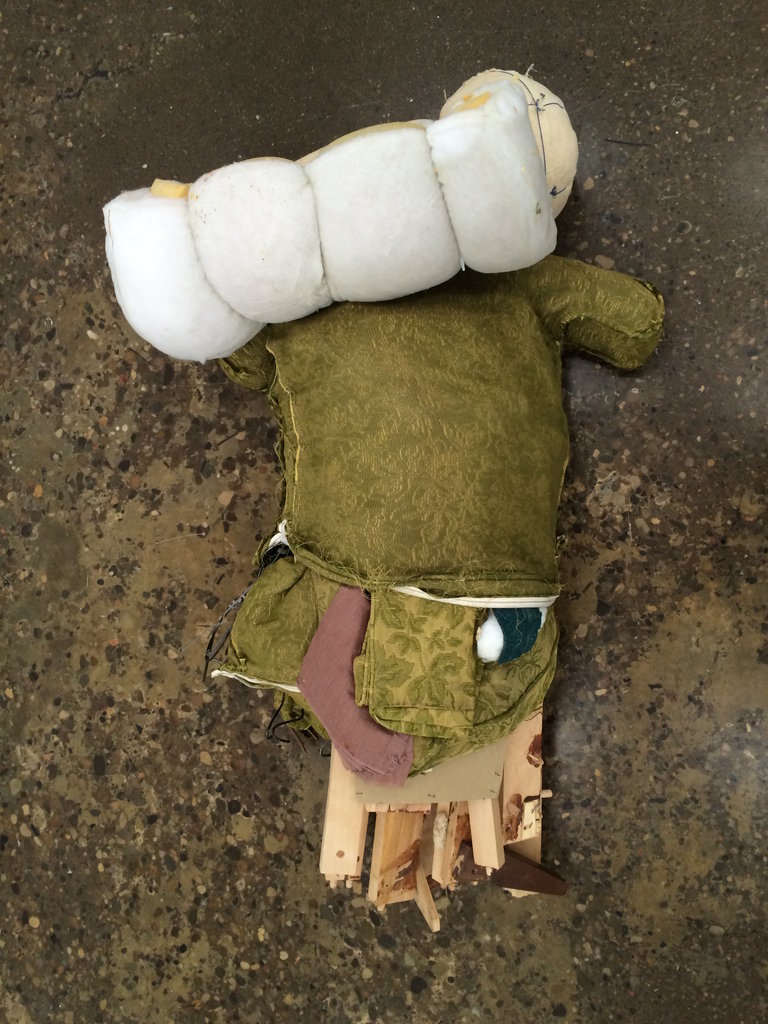 Jennifer Stillwell, Packs, 2002, reconfigured armchairs (series of seven), dimensions variable, Collection of Oakville Galleries
Jennifer Stillwell, Packs, 2002, reconfigured armchairs (series of seven), dimensions variable, Collection of Oakville Galleries
But “Packs” also looks like a furniture graveyard. Each sculpture lies lifelessly on the gallery floor exhibiting anthropomorphic qualities — I identify a couch cushion torso with one-quarter of an arm and a cropped wooden leg (violently broken by owners’ past?). Jimmy Limit’s framed photograph “Last Studio Stack (actual size)” hangs above the “Packs” graveyard, a seeming memorial portrait in honour of the objects (an apple, a lemon, a roll of orange masking tape) whose physical bodies didn’t make it. Likewise, Nikki Woolsey’s “Unslung Ripple Night” displays a hand-broom in a darkly abstracted metal sign box; the deceased on view in its casket, an ode to the little hand-broom that once swept.
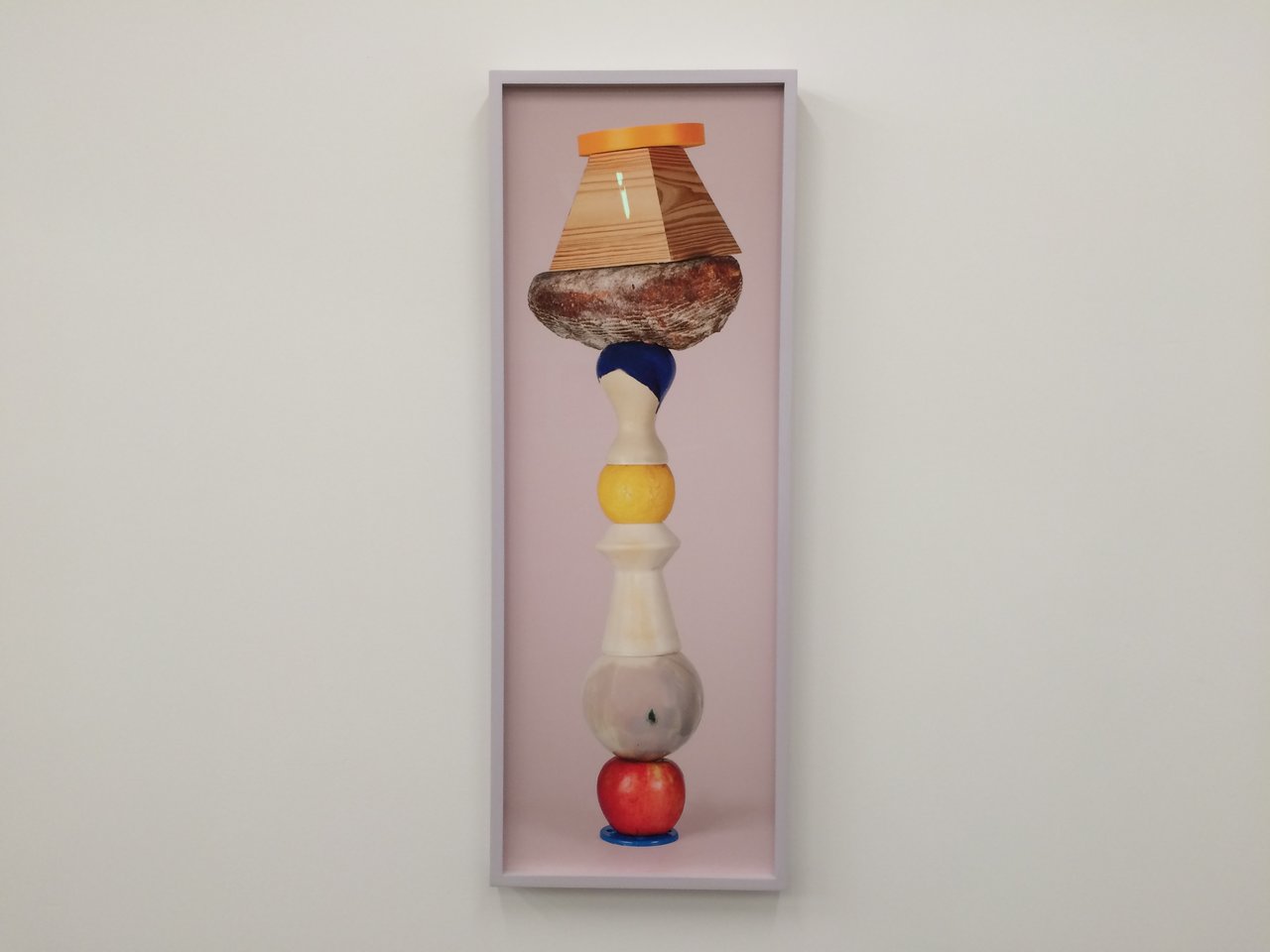 Jimmy Limit, Last Studio Stack (actual size), 2016, digital c-print, 32” x 12”, collection of the artist
Jimmy Limit, Last Studio Stack (actual size), 2016, digital c-print, 32” x 12”, collection of the artist
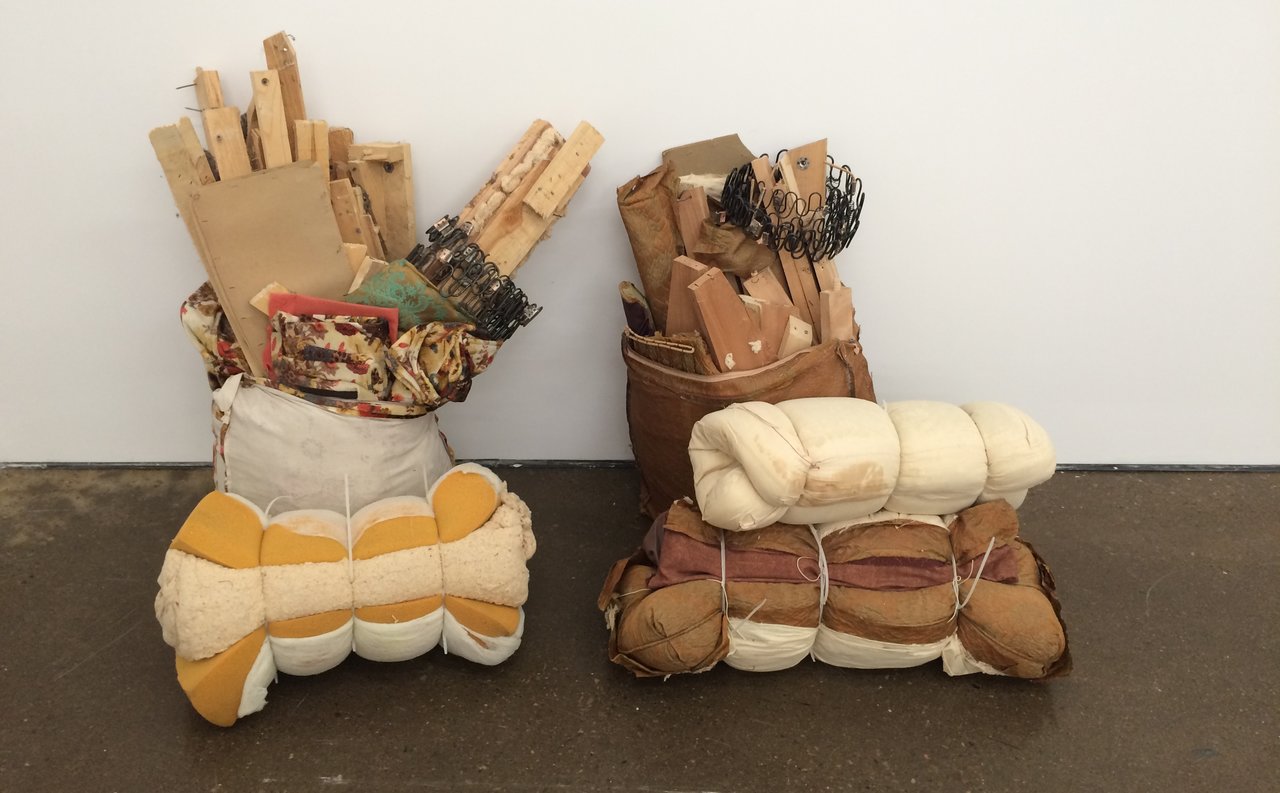 Jennifer Stillwell, Packs, 2002, reconfigured armchairs (series of seven), dimensions variable, Collection of Oakville Galleries
Jennifer Stillwell, Packs, 2002, reconfigured armchairs (series of seven), dimensions variable, Collection of Oakville Galleries
The narrative continues: Rhonda Weppler + Trevor Mahovsky’s multi-media collage “Don’t be sad that it’s over, be happy that it ever began” is a monumental shrine of sorts. Recreating ephemera from an abandoned dorm room wall (including numerous posters, a foam finger, paper lanterns on a string, and a deflated heart balloon) the collage is a reminder of a past life — when the stuff actually elevated the living experience of some eager university freshman. Now covered up with black enamel and stripped from its original home, the wall monument simply hangs like the lifeless detritus that it is. But at least now it’s among friends.
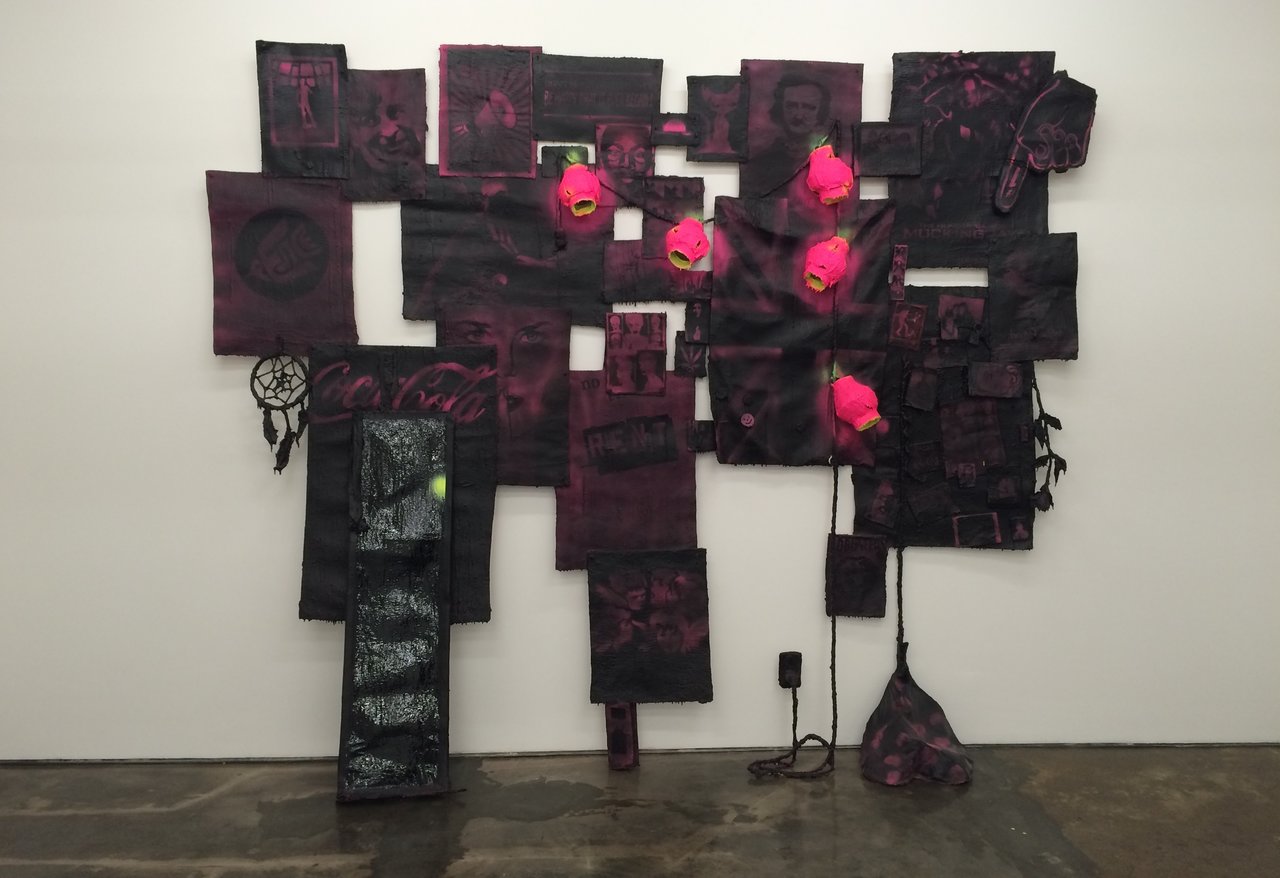 Rhonda Weppler + Trevor Mahovsky, Don’t be sad that it’s over, be happy that it ever began, 2015, polymerized gypsum, enamel and spray paint on metal and cheesecloth armature, 96” x 114” x 9”, collection of the artists
Rhonda Weppler + Trevor Mahovsky, Don’t be sad that it’s over, be happy that it ever began, 2015, polymerized gypsum, enamel and spray paint on metal and cheesecloth armature, 96” x 114” x 9”, collection of the artists
Baleful may evoke heavy themes, but the idea that inanimate objects can live, die, and experience reincarnation (or in this case, get repurposed into works of art) is a thoughtful and optimistic concept. The show also proves what Stillwell exemplified with Bale sixteen years ago: objects that live, die, and then live again make for great art.
Text and photo: Emily Lawrence
*Exhibition information: February 4 – April 2, 2016. Pari Nadimi Gallery, 254 Niagara Street, Toronto. Gallery hours: Wed – Sat, 12 – 5 pm.
